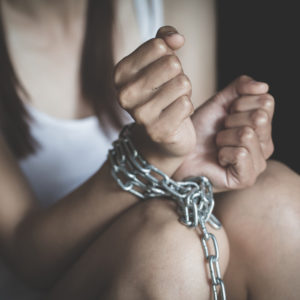The Super Bowl garners attention for more than sport and advertising, with anti-human trafficking advocacy making notable headlines across the last decade. Now, whether mega-sporting events like the Super Bowl and World Cup yield a sizable increase in sex trafficking remains an ongoing debate, increasingly challenged by experts and advocates alike. Empirical evidence is lacking, further demonstrating the immense need for greater research and data analysis on the issue overall. Regardless, the outpouring of awareness and mobilization year over year is impressive.
But if you are outraged by the perceived threat of exploitation in the midst of one of the most watched events in the world, you should be outraged by exploitation period. Though the forms may look different, every day in every country people are enslaved and abused. Women and children are particularly vulnerable, especially young women and girls.
When it comes to modern-day slavery, women and girls together account for more than 70 percent of trafficked persons globally, with girls representing two out of every three child-trafficking victims. Imagine how different these numbers could be if even a fraction of the advocacy and attention human trafficking receives ahead of a football game was sustained and expanded upon globally.
As Polaris Project’s Bradley Miles pointed out ahead of Super Bowl LII in Minnesota, “All this is a one-day snapshot into what otherwise is a 365-day problem. The same traffickers that are committing trafficking …during the Super Bowl, they’re going to wake up in the morning on Monday and do the same thing.”
According to the National Center for Missing and Exploited Children, in the United States “of the nearly 23,500 runaways reported to [the Center] in 2018, one in seven were likely victims of child sex trafficking”. And a 2011 analysis by the U.S. Bureau of Justice Statistics on suspected trafficking incidents revealed that nearly 50 percent of victims identified over a two year period were 17 years of age or younger. In Sub-Saharan Africa, children accounted for 55 percent of identified victims in 2016, with forced labor being the most common form of abuse. And in Central America and the Caribbean, over two-thirds of detected victims were girls.
While stronger coordination, legislation, justice systems, and improved data collection and survivor services are very much needed, so too is prevention support for those at risk generally. Efforts to educate and build resilience and opportunity among vulnerable communities are important mechanisms for curtailing modern-day slavery and manipulation from the outset.
Traffickers notoriously play on vulnerabilities. Poverty, isolation, and displacement further exacerbate the danger. In the face of inequality, lack of opportunity, and desperation, young women and adolescent girls are married off as child brides, sexually exploited, or subjugated to domestic servitude.Amid ongoing conflict, youth are recruited for use as forced laborers, child soldiers, and armed combatants, at times even being coerced to serve as human shields and suicide bombers. As the United Nations Office on Drugs and Crime stressed in the latest iteration of their annual report on human trafficking, “from girls forced to wed to boys made to cook and clean, militants are using trafficking as a tool to boost their control in areas where the rule of law is weak.”
Greater prioritization and investment in programs that support at risk populations, like young women and adolescent girls, can yield significant impact. For example, in the United States organizations like PCI are working to educate vulnerable youth on the signs and risks of trafficking. The organization provides services like mentoring and social-emotional learning to better equip young people with resilience and the ability to make positive life choices.
Internationally, organizations and social impact brands like NOMI Network, Beulah London, and others not only raise awareness of the widespread issue of modern-day slavery among consumers, but also work to break cycles of poverty. This includes investing in skills training, social services, and economic opportunities for survivors and those at increased risk of exploitation.
Drawing attention to human trafficking is critical, but it is a gross disservice to those affected to limit advocacy and action to a single event like the Super Bowl. From the media to public and private sector stakeholders, concerted and sustained efforts are needed now more than ever.

